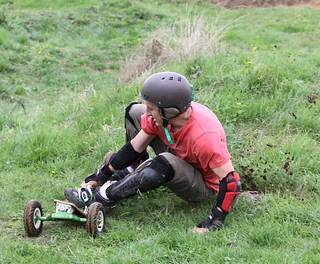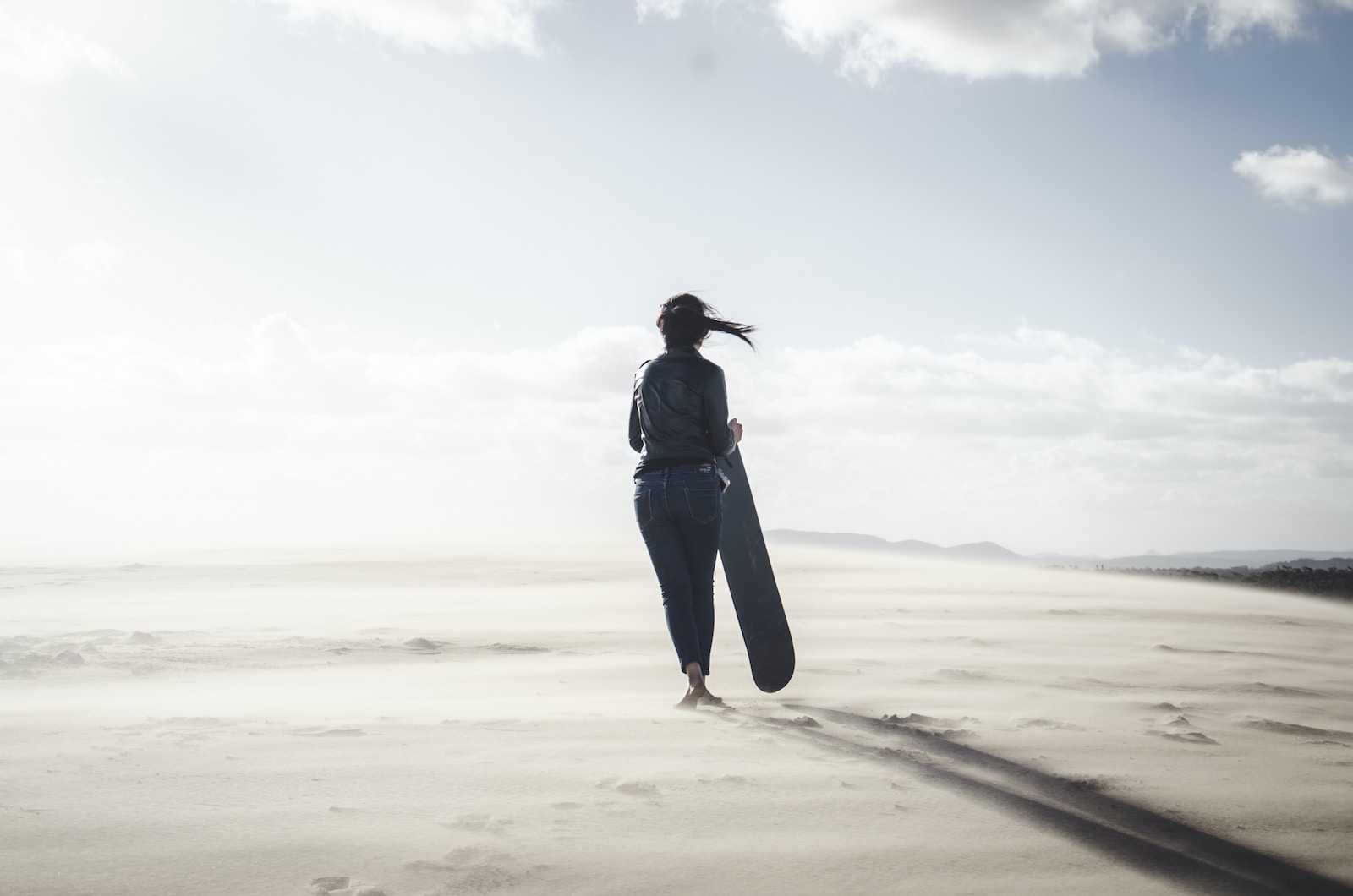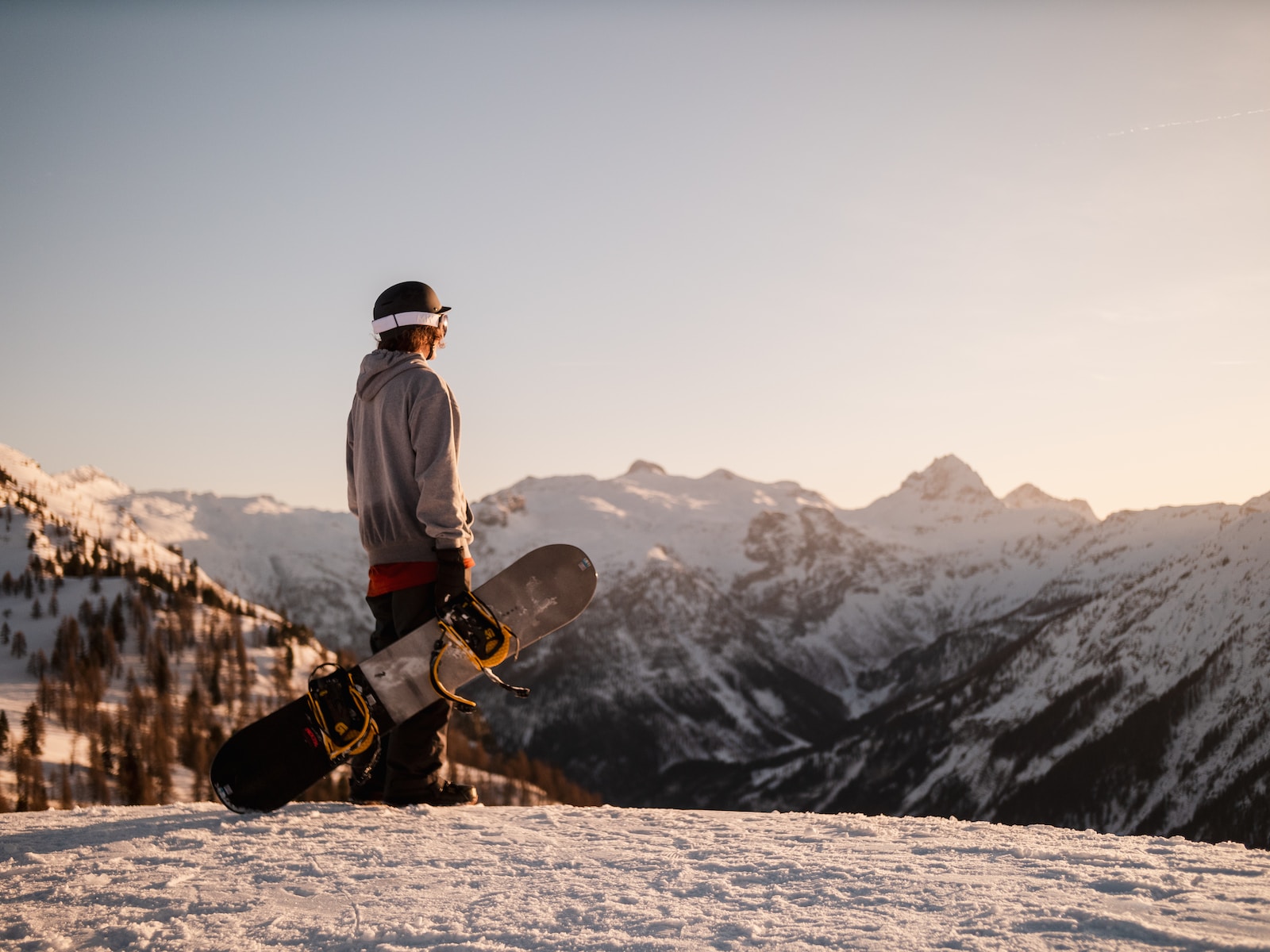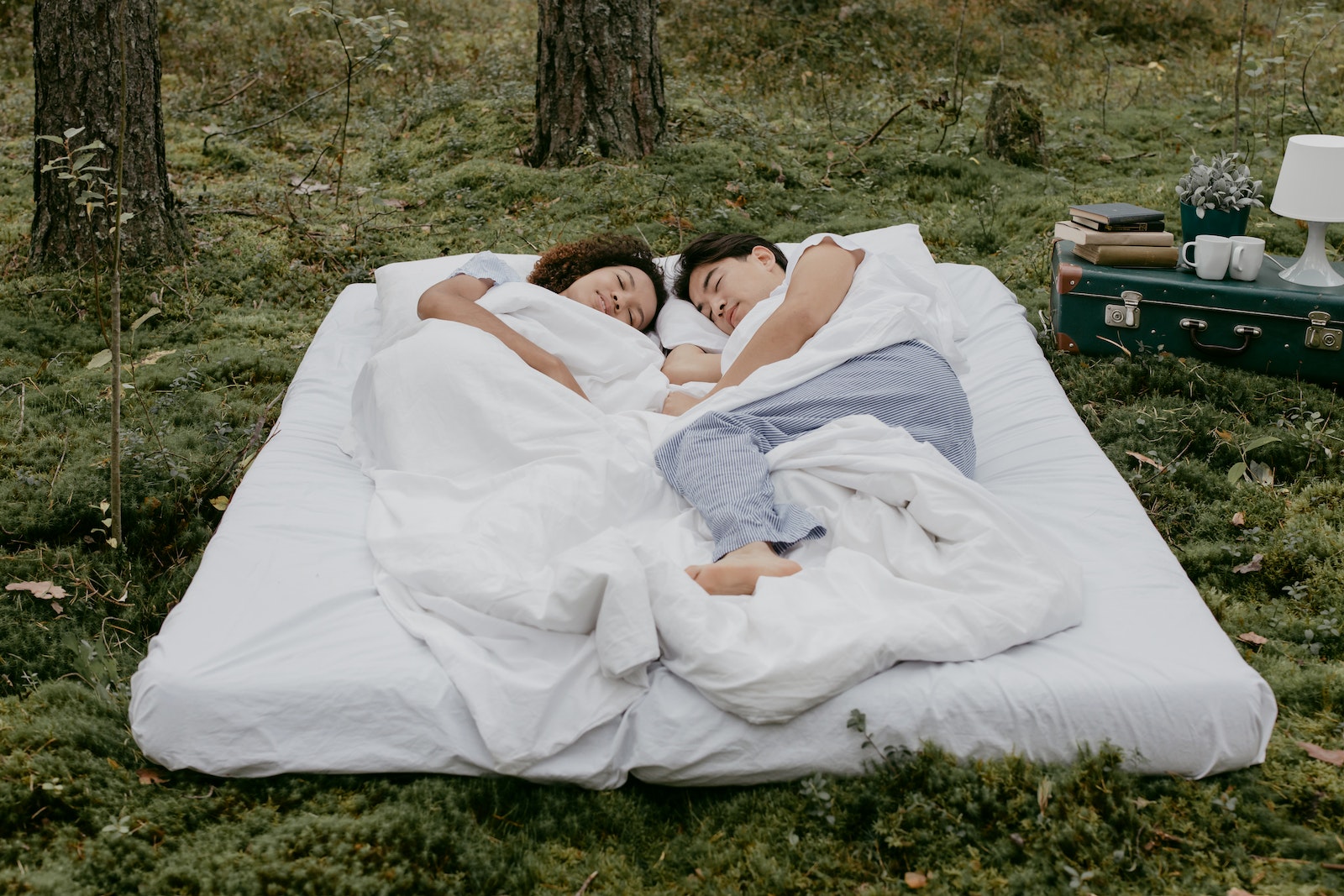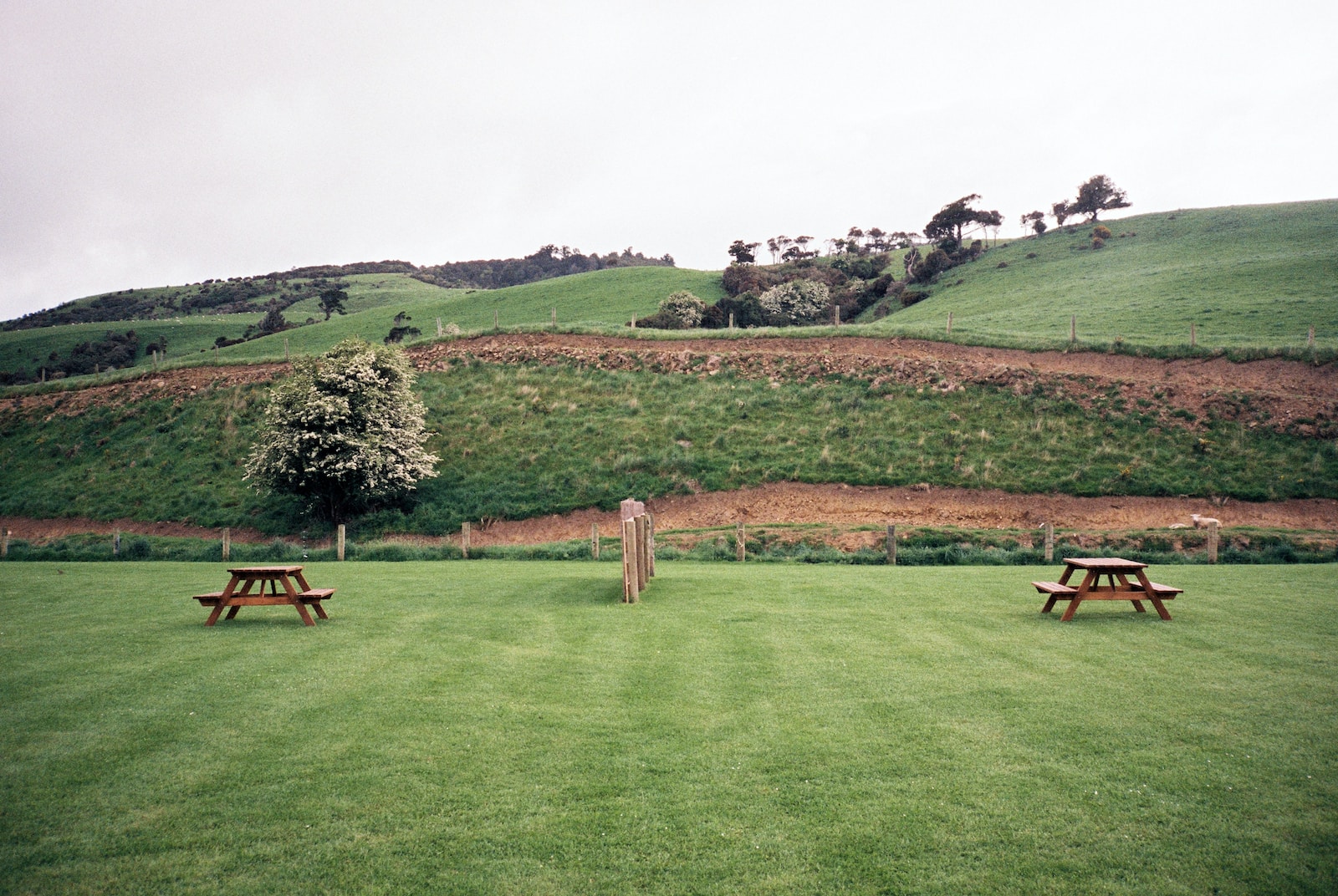Table of Contents
Introduction
Camping is one of the most cherished outdoor activities, offering a chance to connect with nature and enjoy the simple pleasures of life. But no camping trip is complete without the warmth and ambiance of a well-built campfire. However, building the perfect campfire is not just about striking a match. It involves careful selection of the right kind of logs, understanding the local regulations, knowing the best methods for building the fire, and keeping safety at the forefront.
In this comprehensive guide, we’ll explore everything you need to know about choosing the best logs for camping fires and how to build a fire that is safe, efficient, and satisfying.
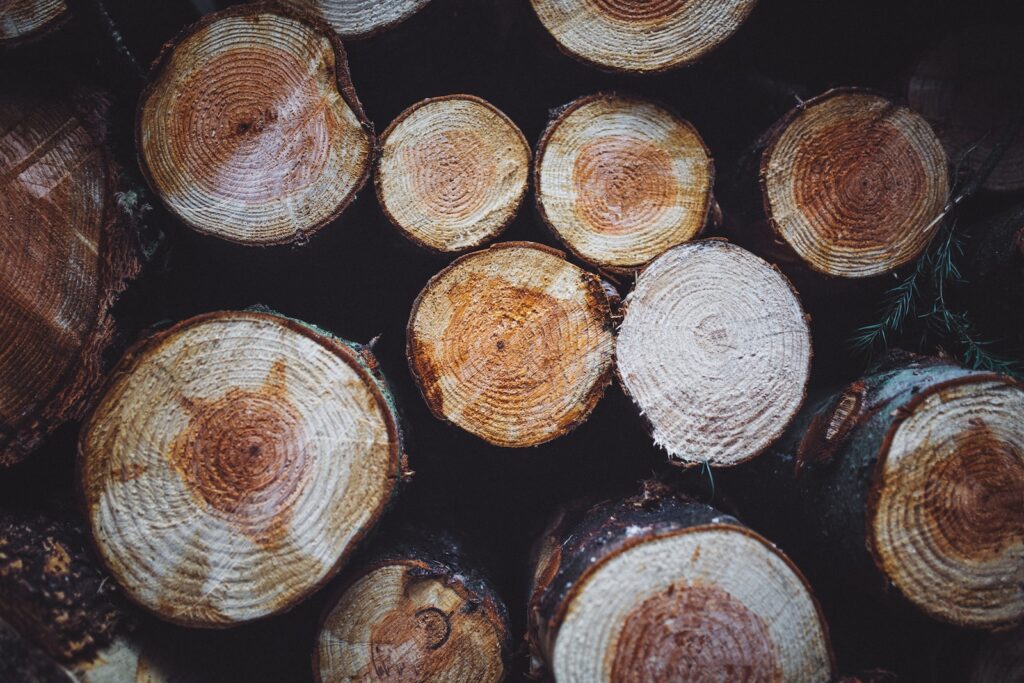
Choosing the Best Logs for Camping Fires
Hardwoods: The Ideal Choice
When it comes to selecting the best logs for campfires, hardwoods such as oak, maple, or birch are generally preferred. Their slow-burning nature and ability to produce long-lasting heat make them ideal for cooking meals or keeping warm during chilly nights.
Advantages of Hardwoods:
- Slow Burning: More heat over a more extended period.
- Less Smoke: Minimal disturbance and discomfort.
- Versatility: Great for cooking or warming purposes.
Importance of Dry Logs
The condition of the wood is equally vital. Wet or green logs can be a nightmare to light, producing more smoke and burning inefficiently. Always look for well-seasoned logs that have been dried for at least six months.
Tips for Finding Dry Logs:
- Check for Cracks: Dry wood usually has cracks at the ends.
- Sound Test: Dry wood gives a hollow sound when struck together.
- Feel: Dry wood is lighter and less damp to the touch.
Size Matters
Opt for logs that are small enough to fit in your fire pit or campfire ring but large enough to provide a steady heat source. Having a mix of log sizes, including some smaller pieces for kindling and larger pieces for a longer burn, can help you build a well-balanced fire.
Local Regulations
Always check local regulations and guidelines before gathering firewood. Restrictions may exist to protect the environment or prevent the spread of invasive species. It’s often best to purchase firewood locally or use designated firewood provided at the campsite.
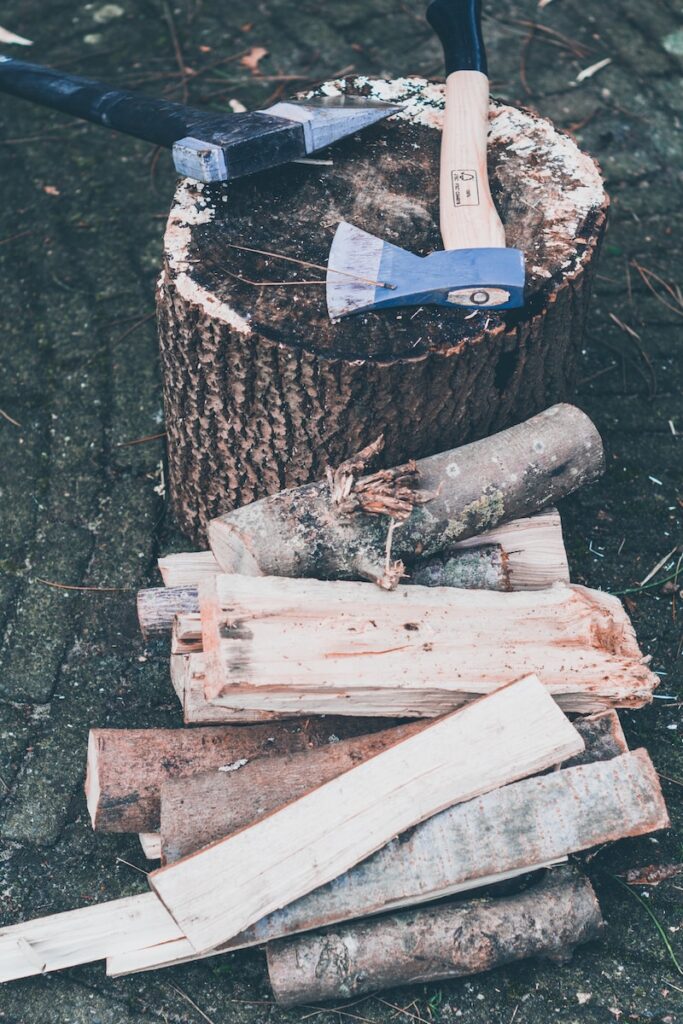
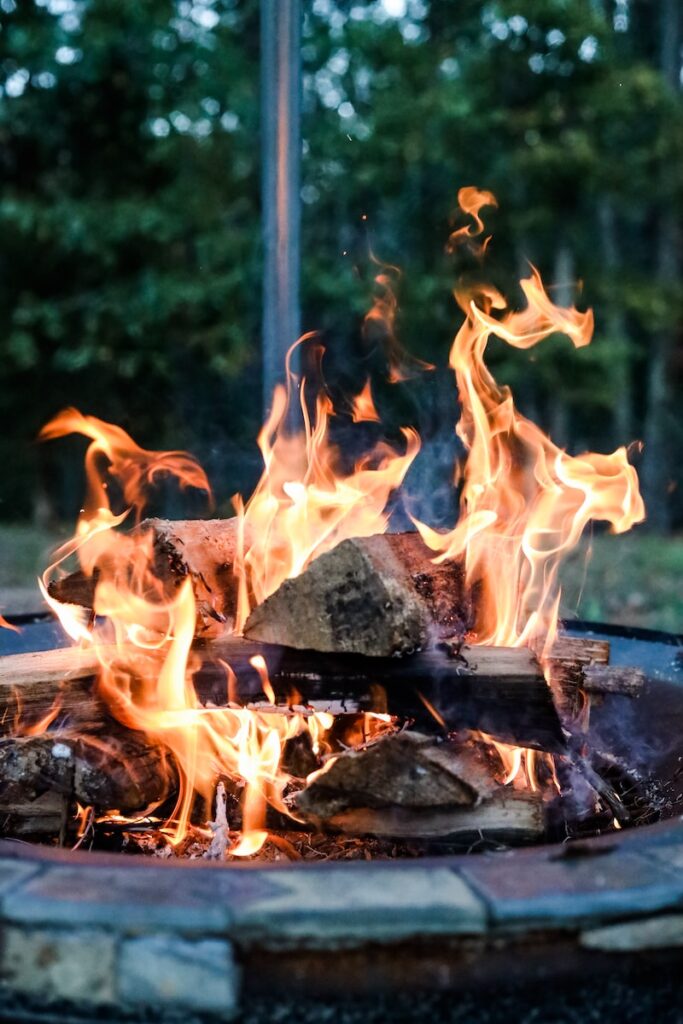
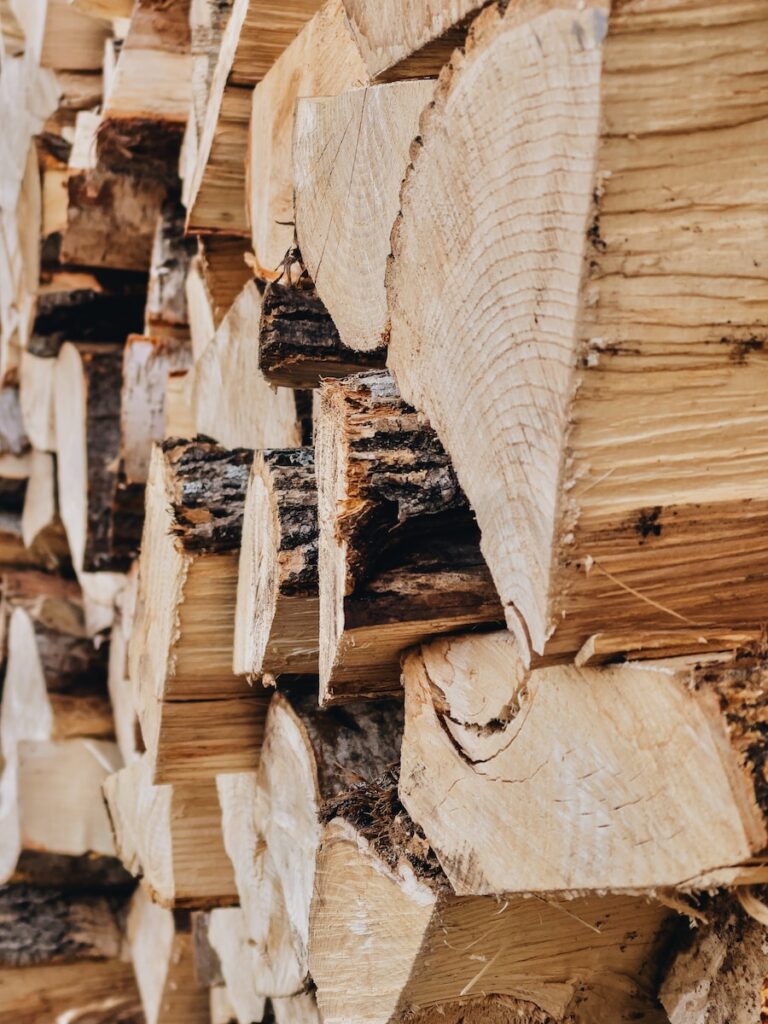
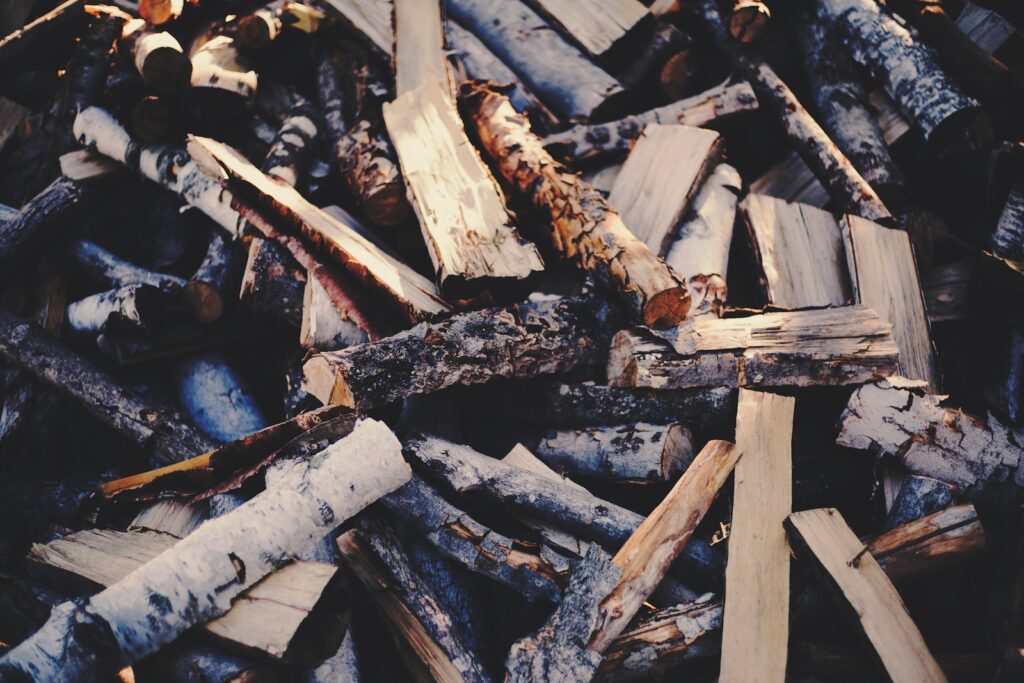
Types of Wood for Camping Fires
Apart from the widely preferred hardwoods, there are several other types of wood suitable for camping fires, each with unique characteristics.
Pine
Pine is a softwood that’s readily available and easy to ignite. Although it burns quickly and can produce more smoke and sparks compared to hardwoods, it can be used in combination with hardwoods for a more sustained fire.
Cedar
Cedar wood’s pleasant aroma makes it an attractive option. It burns relatively well, producing a moderate amount of heat. Be cautious of the sparks, though!
Fruit Woods
For a more aromatic fire, fruit woods like apple or cherry can be an excellent choice. These woods burn relatively well and produce a pleasant fragrance but might not be as readily available.
The right choice of logs can significantly enhance your camping experience. Whether you prefer the dense, slow-burning hardwoods or the fragrant cedar and fruit woods, understanding the characteristics of different types of wood and considering factors like size, dryness, and local regulations is essential. Stay tuned for more in-depth insights on building the perfect campfire and choosing the best fire pits for camping in the following segments.
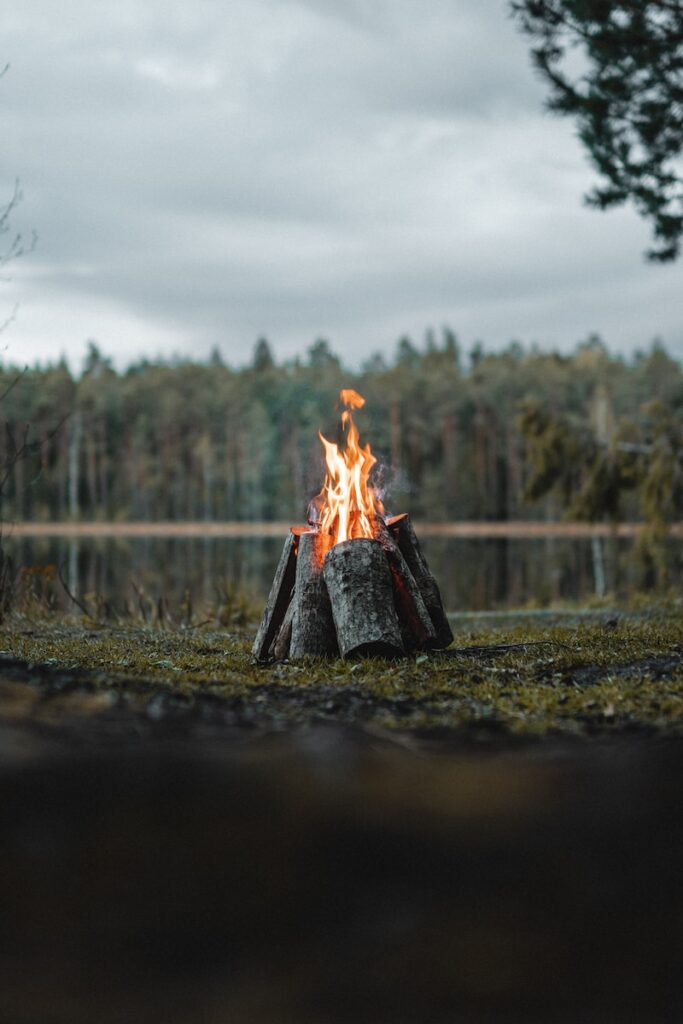
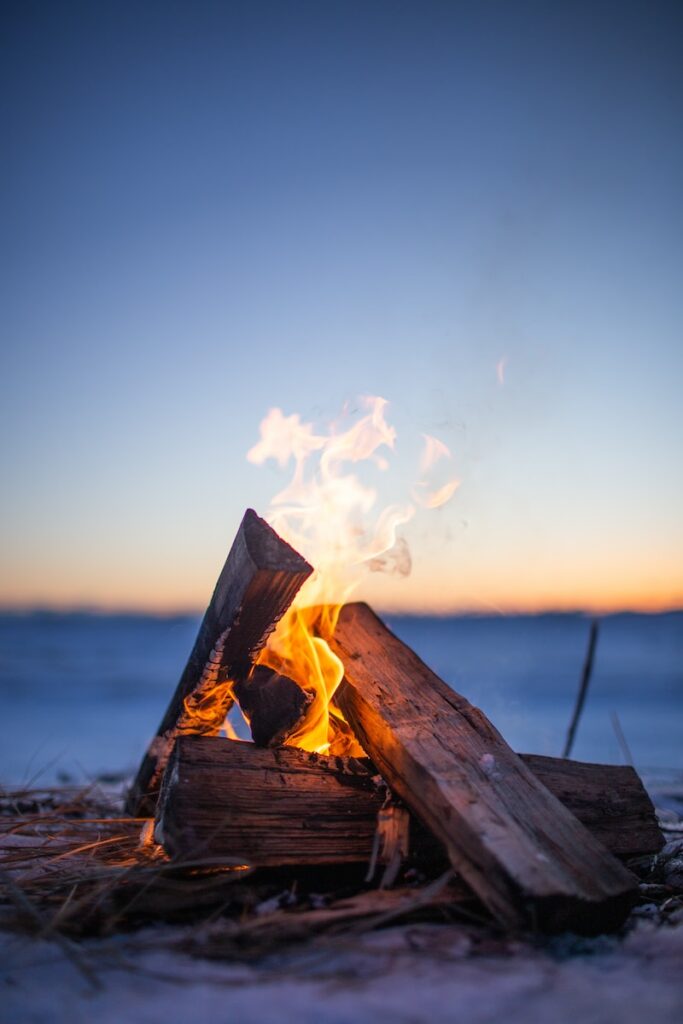
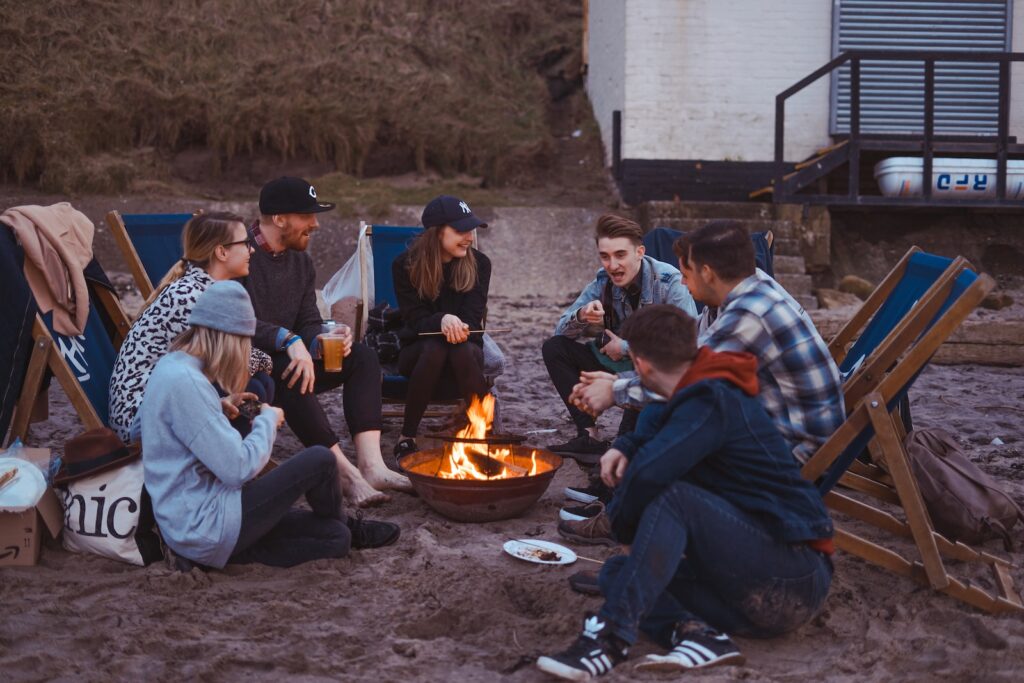
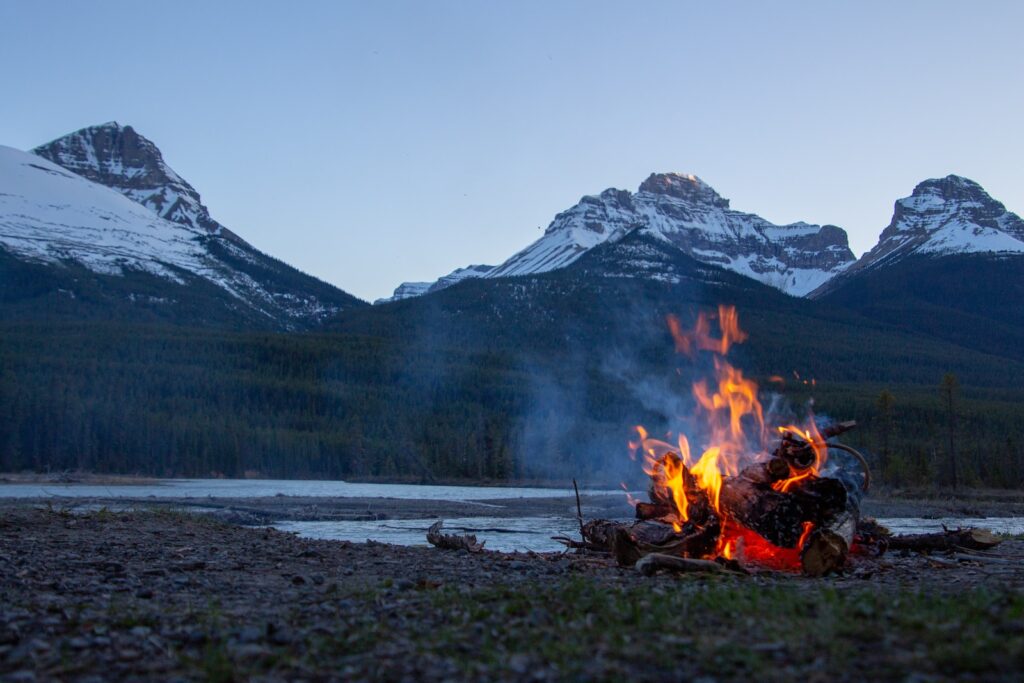
Building a Campfire Safely and Efficiently
Creating a campfire is about more than just igniting logs. It’s an art that requires careful planning, understanding of basic principles, and adherence to safety norms. Here’s a step-by-step guide to help you build a campfire safely and efficiently.
Choose a Suitable Location
Selecting the right spot is crucial. Look for a designated fire pit or a clear, open area away from flammable objects like trees, shrubs, or tents. Ensure there are no overhanging branches that could catch fire.
Gather Your Materials
Gather the necessary materials:
- Firewood (including hardwoods like oak, maple, or birch)
- Kindling (small twigs or dry leaves)
- Newspaper or fire starters.
Different sizes of firewood, from small sticks to larger logs, help create a balanced fire.
Prepare the Fire Pit
Clear the area of debris or leaves and create a ring of rocks or a fire ring to contain the fire. It aids in preventing the fire from spreading and adds a safety layer.
Arrange the Firewood
Create a foundation using kindling in the fire pit’s center. Then, stack a few small pieces of firewood, leaving space for air circulation, in a teepee or log cabin shape.
Ignite the Fire
Light the kindling from multiple points and gradually add more as the fire grows. Using newspaper or fire starters can make this process more manageable.
Add Larger Logs
Once the flames are stable, gradually add larger logs. Proper placement ensures proper airflow and maintains the fire’s heat.
Monitor and Maintain the Fire
Stay alert and attend to the fire, adding more wood when necessary. Always have a bucket of water or sand nearby for emergencies.
Extinguish the Fire Completely
To extinguish the fire, reduce its size gradually, spread the embers, and douse them with water. Repeat until the fire is completely out and the ashes are cool to the touch.
Note: Always follow local regulations and guidelines and practice Leave No Trace principles.
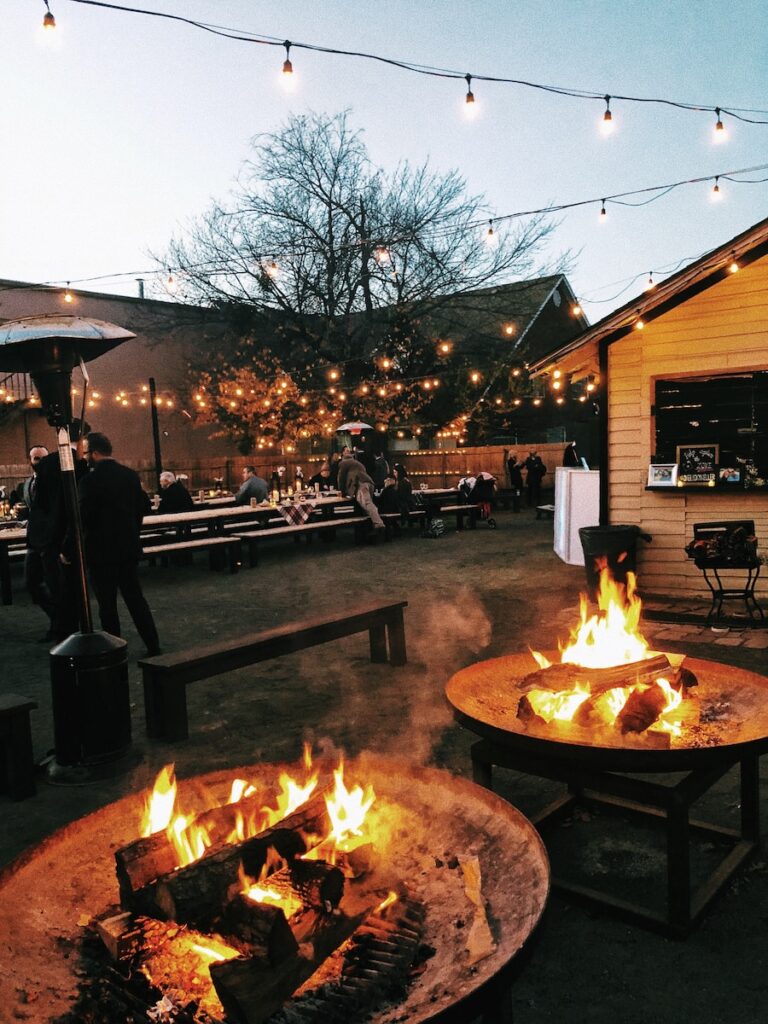
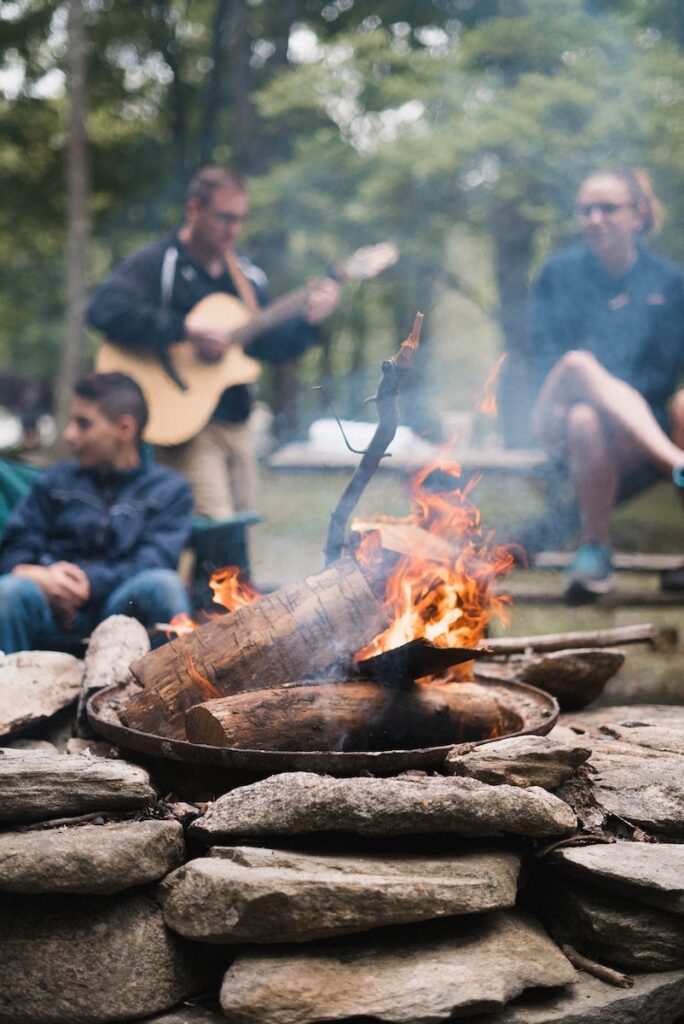
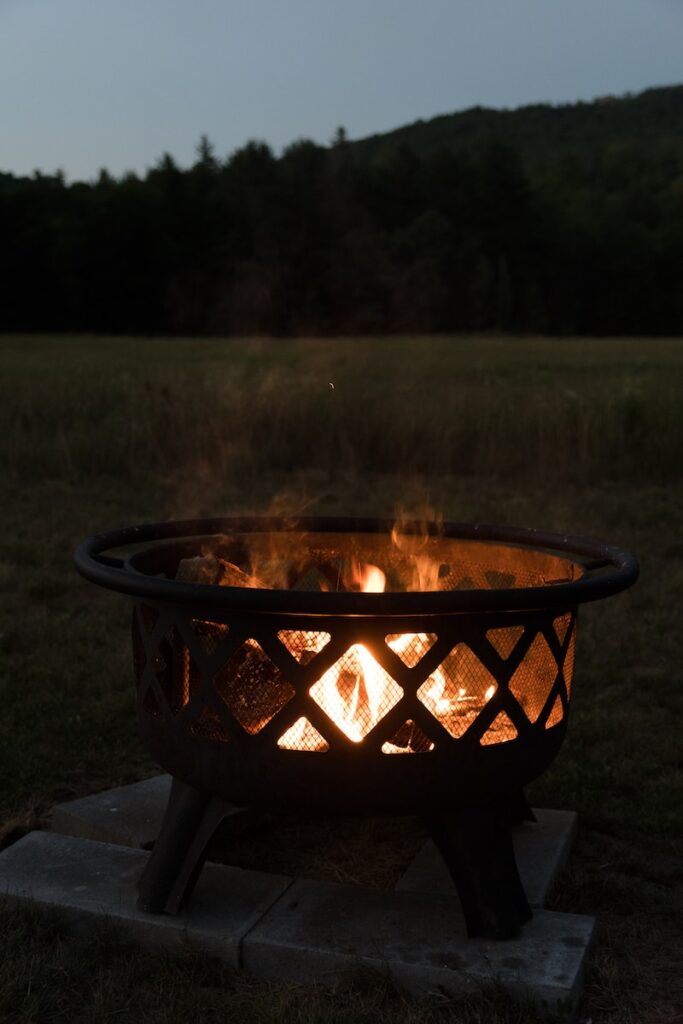
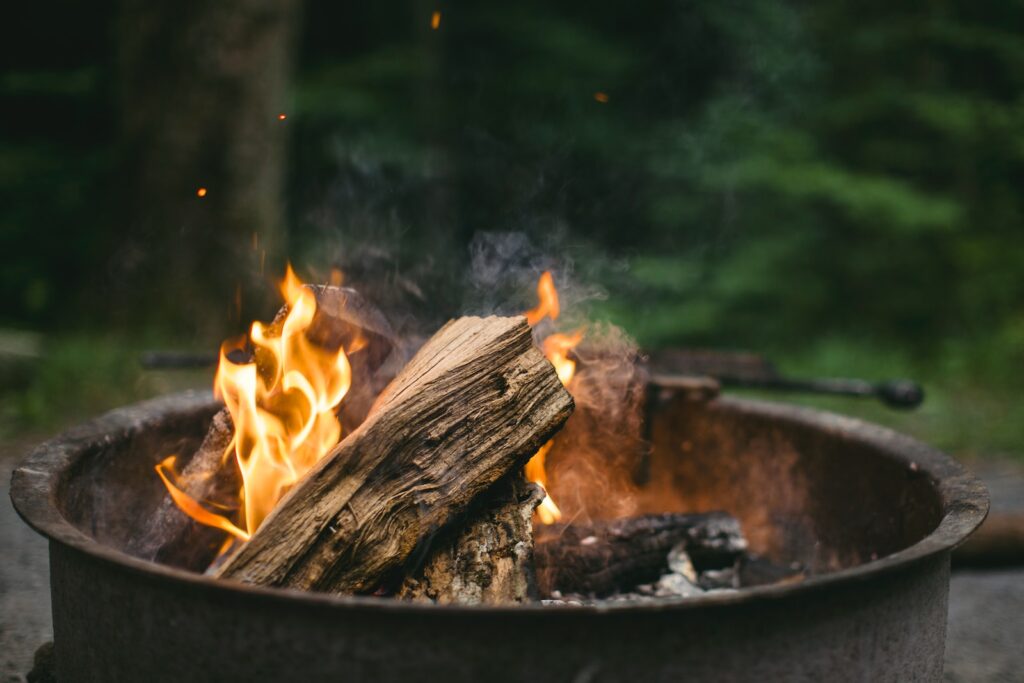
Selecting the Best Fire Pit for Camping
Choosing the right fire pit is essential for a satisfying and safe camping experience. Here are considerations to help you make an informed decision:
Portable and Lightweight
Opt for a camping-designed, lightweight fire pit. Collapsible options or those with carry bags make transport a breeze.
Size and Capacity
Consider your camping group’s size and the amount of firewood you use. The fire pit should accommodate the desired fire size and allow everyone to gather comfortably.
Material and Durability
Materials like stainless steel or cast iron offer varying benefits, such as rust resistance or heat retention. Choose a durable fire pit that can withstand outdoor conditions.
Safety Features
Look for features like a spark screen or lid to contain embers. Heat-resistant bases or stands are also beneficial.
Ease of Setup and Cleanup
Select a fire pit that’s easy to assemble and clean. Removable ash pans make cleanup more convenient.
Local Regulations and Restrictions
Familiarize yourself with area regulations to choose a compliant fire pit.
Reviews and Recommendations
Consider feedback from other campers or reputable brands to find the best-performing fire pit models.
Building the perfect campfire is a satisfying and vital part of any camping trip. Following the proper steps ensures safety, efficiency, and an enjoyable experience. Additionally, choosing the right fire pit enhances the overall camping experience by catering to your specific needs and preferences. The lessons and insights shared in this segment can turn anyone from a novice to a campfire pro, guaranteeing memorable nights around the flames with friends and family.
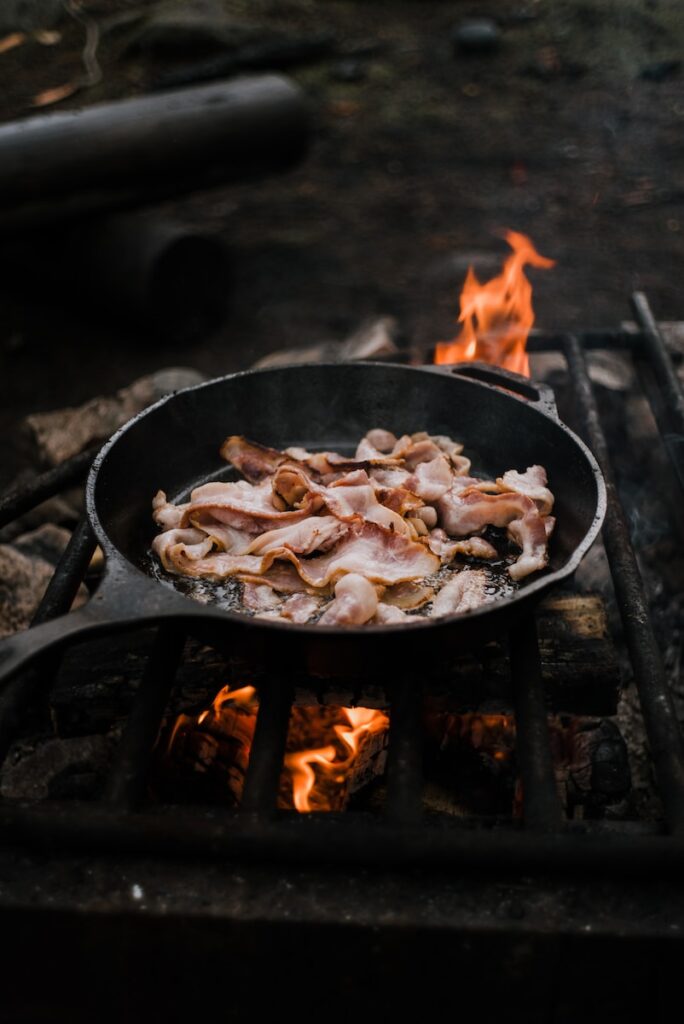
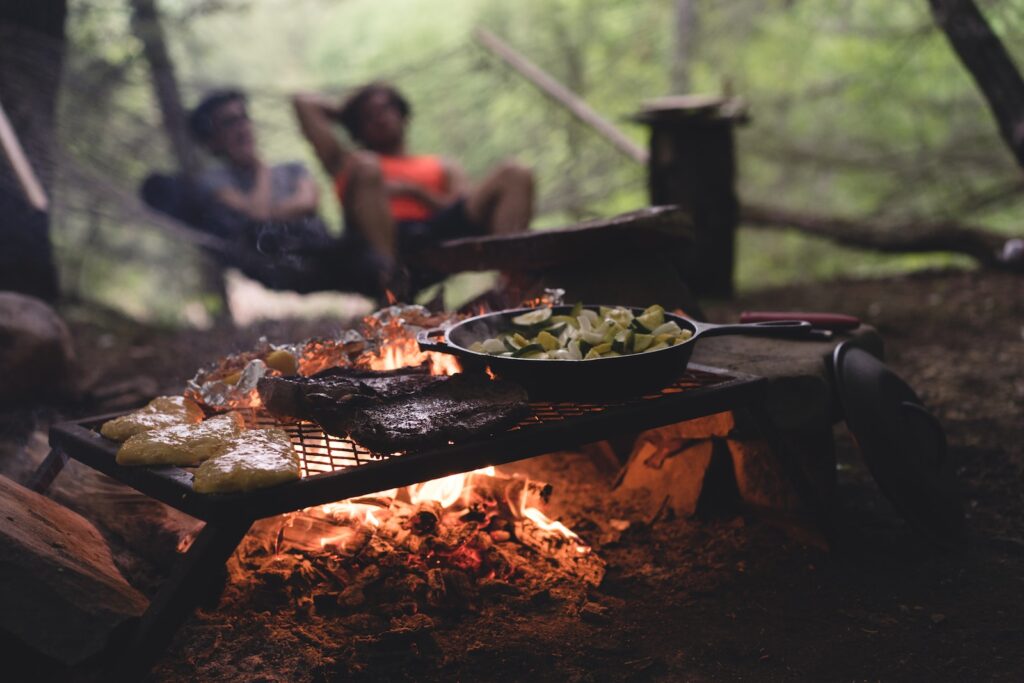
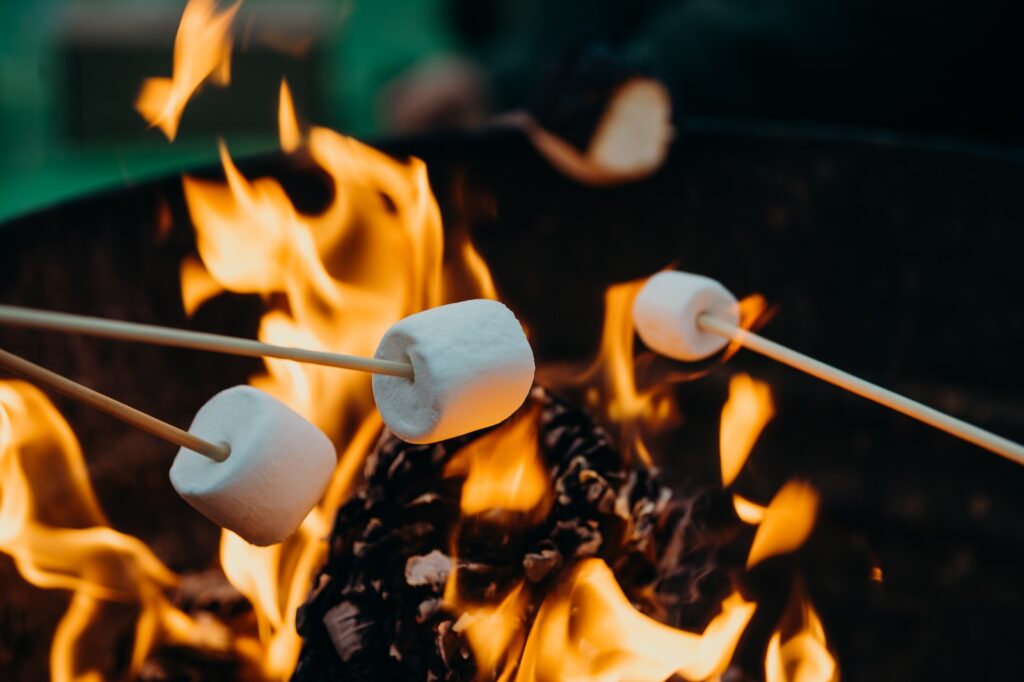
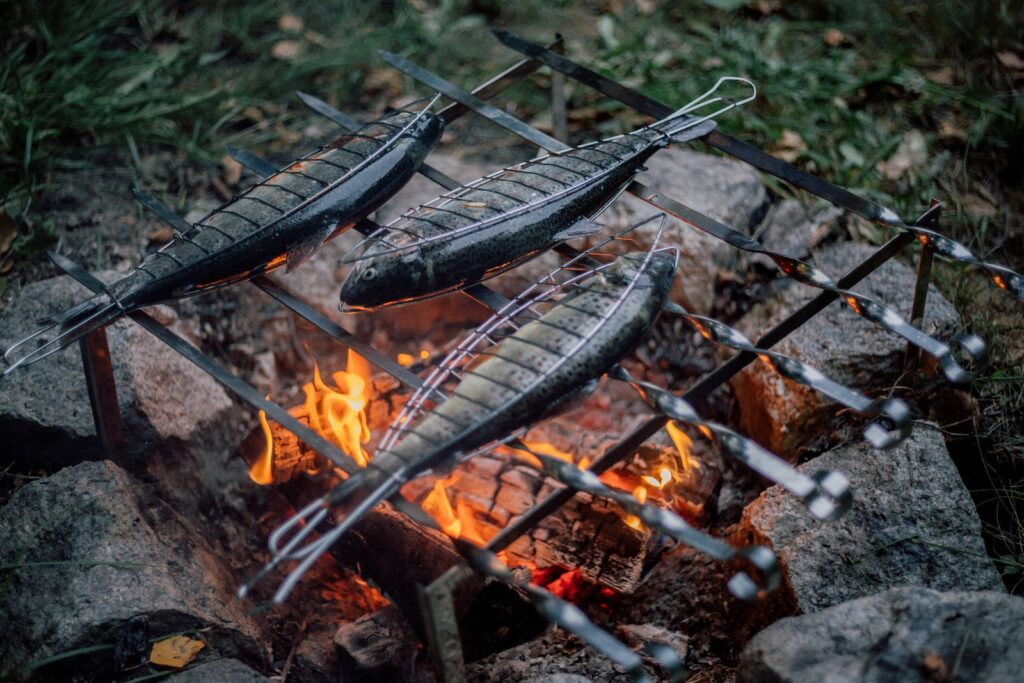
Innovative Campfire Recipes
Camping isn’t just about the thrill of the great outdoors, the scenic landscapes, or the adventurous activities. It’s also about the culinary delights you can create around the campfire. In this section, we’ll explore some innovative campfire recipes and share tips to enhance the gastronomic experience during your camping expedition.
Whether you’re a seasoned camper or a first-timer, these campfire recipes will bring joy to your taste buds and elevate your outdoor cooking skills.
Campfire Skewers
Ingredients:
- Cubed meat (chicken, beef, or pork)
- Vegetables (bell peppers, onions, mushrooms)
- Marinade of choice
Instructions:
- Marinate the meat in your favorite marinade for at least 2 hours.
- Thread the meat and vegetables onto skewers.
- Grill over the campfire until cooked to your preference.
- Serve with rice or bread.
Foil Packet Dinners
Ingredients:
- Protein (fish, chicken, tofu)
- Vegetables (carrots, potatoes, broccoli)
- Seasonings (herbs, salt, pepper)
- Olive oil or butter
Instructions:
- Place your protein and veggies on a piece of aluminum foil.
- Season with herbs, salt, and pepper and drizzle with oil or butter.
- Fold the foil into a sealed packet.
- Cook on hot coals for 15-20 minutes, flipping halfway.
- Open carefully (watch for steam) and enjoy right from the foil.
Campfire Pancakes
Ingredients:
- Pancake mix
- Water or milk
- Cooking oil or butter
- Toppings (syrup, fruit, nuts)
Instructions:
- Prepare the pancake batter according to the package instructions.
- Heat a skillet over the campfire and add oil or butter.
- Pour the batter into the skillet and cook until bubbles form.
- Flip and cook the other side until golden brown.
- Serve with your favorite toppings.
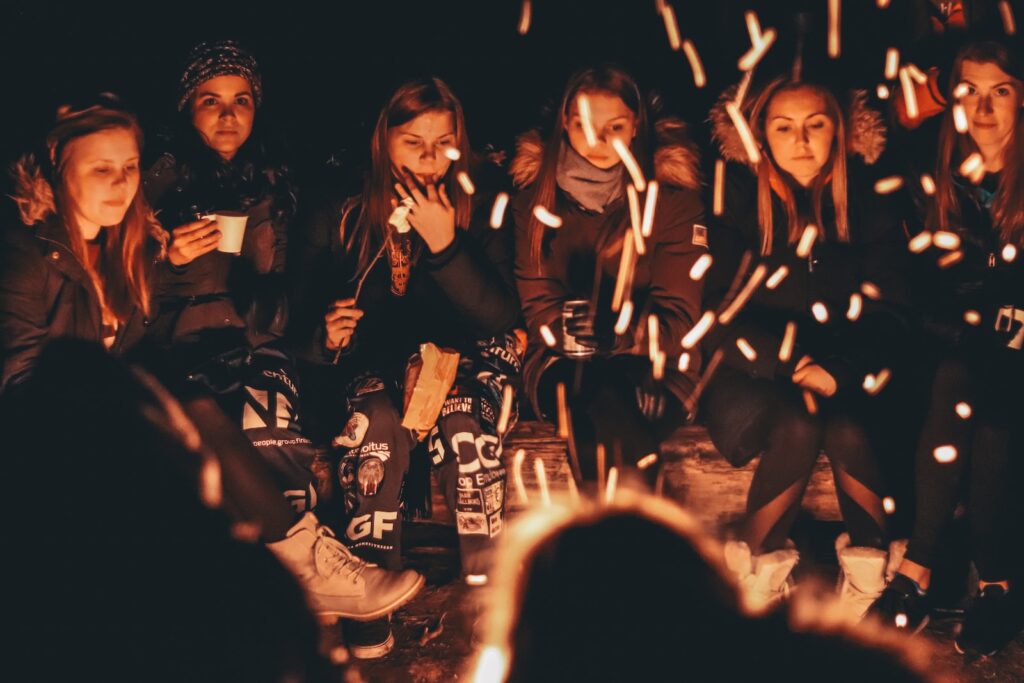
Tips for Maximizing Enjoyment Around the Fire
Beyond cooking, campfires offer a cozy and captivating ambiance. Here are some tips to make the most of your time around the fire:
Safety First
Always have fire safety equipment on hand and follow all safety guidelines. Educate children about fire safety to ensure a worry-free experience.
Respect the Environment
Follow Leave No Trace principles and clean up all trash and debris. Be mindful of wildlife and your surroundings.
Comfort is Key
Bring comfortable seating like foldable chairs or cushions. Blankets can add warmth on chilly nights.
Plan a Variety of Activities
Prepare games, songs, or storytelling sessions to enjoy with friends and family around the fire. A well-told ghost story can be particularly thrilling!
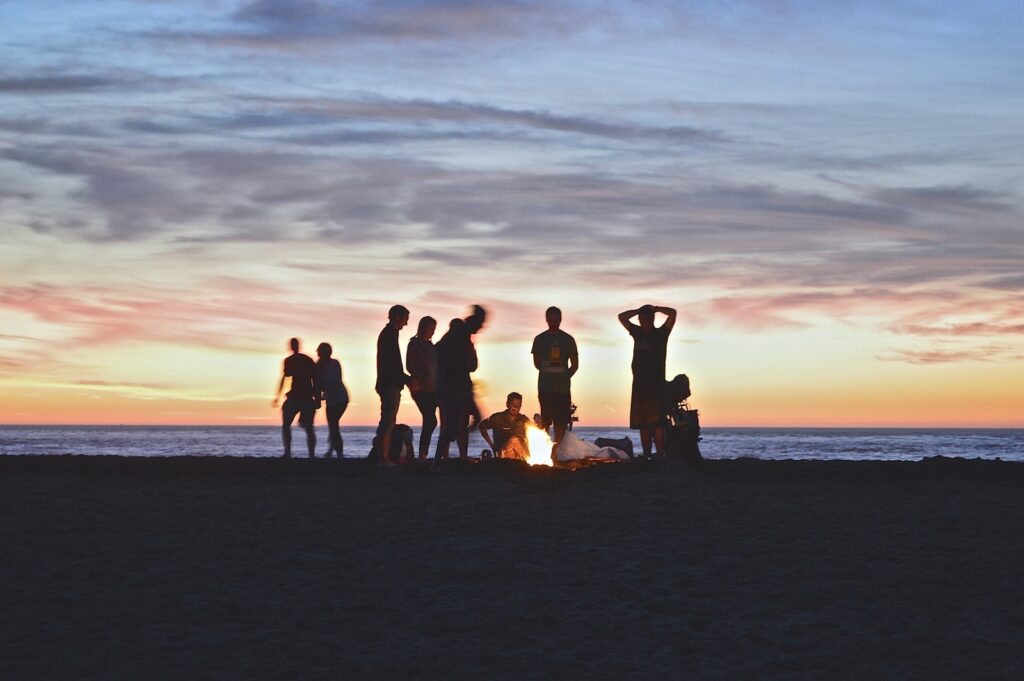
Fun and Engaging Campfire Games for All Ages
An integral part of camping involves gathering around the fire, sharing stories, roasting marshmallows, and playing games. A good campfire game can bring people together, foster connections, and create lasting memories. Here are some of our favorite camping games that you can enjoy around the fire.
Two Truths and a Lie
Two Truths and a Lie is a classic icebreaker game often played at parties, gatherings, and around campfires. It’s a fun and interactive way to get to know one another better, learn surprising facts about friends and family, and even uncover hidden talents or experiences. The rules are simple, and here’s how you play:
Objective
The main objective of the game is to stump the other players by crafting a lie that is believable and blends in seamlessly with your truths.
Rules and How to Play
- Gather Players: Invite everyone to sit in a circle. The game is best played with at least three participants, and there’s no upper limit to how many can play.
- Explain the Game: Ensure everyone understands the premise: each player will share three statements about themselves – two that are true and one that is false.
- Choose the Order: Decide the order of play. You can go clockwise, counterclockwise, or let the host begin.
- Prepare Your Statements: Give everyone a moment to think of their two truths and one lie. The lie should be something plausible and not too outrageous. The goal is to make it difficult for others to spot the falsehood.
- Share the Statements: One by one, each player shares their two truths and one lie in any order without revealing which is which.
- Guess the Lie: After a player shares their statements, the other players take turns guessing which statement they believe is the lie. Players can ask follow-up questions to try to uncover the truth, but the one sharing the statements must not give away the lie.
- Reveal the Lie: Once everyone has made a guess, the player reveals the lie and can explain or elaborate on the truths if desired.
- Keep Score (Optional): If you wish to make the game more competitive, you can keep score. Players earn a point for correctly guessing the lie, and the person who shared the statements earns a point for every wrong guess. The player with the most points at the end of the game wins.
- Continue to the Next Player: Play continues with the next person in the circle, and the game proceeds until everyone has had a turn or until players decide to stop.
Why Play Two Truths and a Lie?
This game is more than just entertainment. It promotes active listening, critical thinking, and creates an atmosphere of camaraderie and laughter. It’s an excellent choice for team-building events, family gatherings, or simply a fun night around the campfire.

Charades: A Classic and Entertaining Campfire Game
Charades is a beloved and timeless game that offers endless fun and requires no special equipment. It can be played by all age groups and can be adapted to suit different themes and difficulty levels. Here’s how you can enjoy this engaging game around the campfire.
How to Play Charades
1. Divide into Teams:
Divide the players into two or more teams. The game is played in turns, with each team trying to guess the word or phrase being acted out by a member of their team.
2. Choose a Theme (Optional):
You can select a theme for the game, such as movies, animals, famous personalities, or keep it open-ended.
3. Prepare the Words/Phrases:
Write down several words or phrases related to the chosen theme (if any) on small pieces of paper. Fold them and place them in a container.
4. Act it Out:
A player from the first team draws a piece of paper and reads the word or phrase silently. They must then act it out without speaking or making any sounds. Their team has a set time limit (usually 2-3 minutes) to guess what it is.
- Movies: Pretend to reel a movie camera.
- Books: Pretend to read a book.
- Songs: Pretend to sing into a microphone.
5. Scoring:
If the team guesses correctly within the time limit, they score a point. If not, no points are awarded, and it’s the next team’s turn.
6. Take Turns:
Continue taking turns, allowing each team to have an equal number of turns. The game continues until all words/phrases are used, or you can set a predetermined number of rounds.
7. Declare a Winner:
The team with the most points at the end of the game wins.
Tips and Variations:
- Difficulty Levels: You can adapt the game to suit different age groups by choosing simpler or more complex words/phrases.
- Time Limit: You can adjust the time limit based on the difficulty level.
- Use of Props: While not traditional, you can allow the use of props to make the game more engaging.
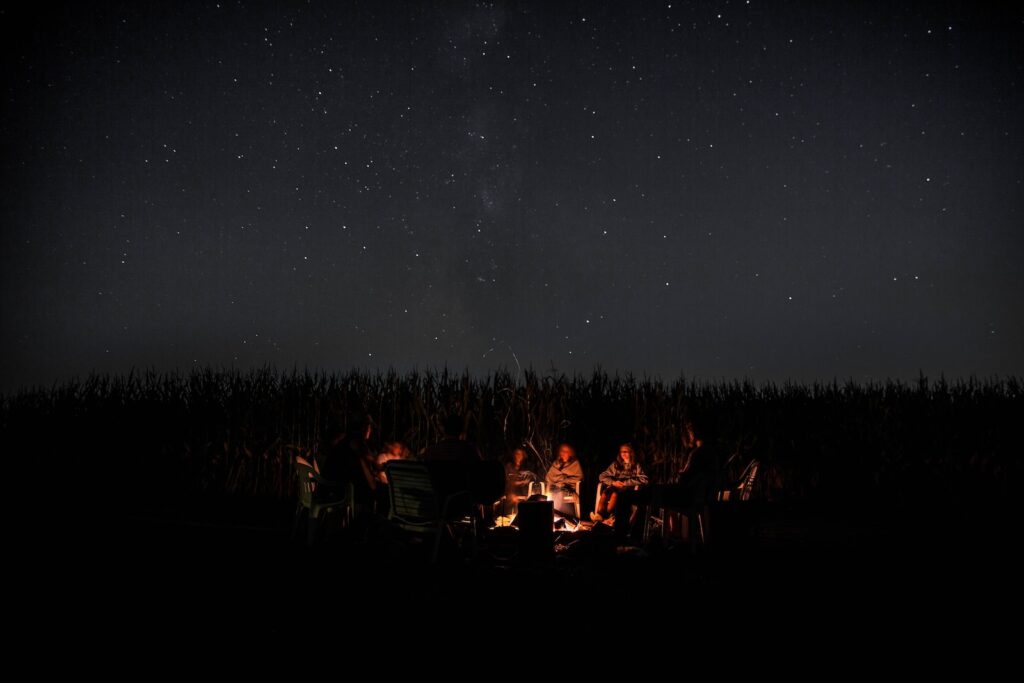
The Story Game: A Guide to Playing
The Story Game is a collaborative and imaginative campfire activity perfect for friends and family of all ages. Participants work together to create a unique and often whimsical story, with each person adding a sentence or two. The resulting tale, often filled with unexpected twists and turns, can be humorous, mysterious, fantastical, or anything in between.
How to Play The Story Game
- Gather Around the Fire: Ensure everyone is seated comfortably around the campfire, close enough to hear one another.
- Choose a Starter: Select someone to kick off the story. It can be the eldest, the youngest, or simply someone who volunteers.
- Start the Story: The chosen person begins the story with a sentence or two. This can be anything from the realistic (“It was a dark and stormy night…”) to the absurd (“In a land where unicorns played chess…”).
- Pass It On: The next person in the circle continues the story, adding their own twist. This can include introducing new characters, changing the setting, adding a surprise, or anything else that comes to mind.
- Keep It Going: Continue around the circle, with each person adding to the story. Encourage creativity and don’t worry about the story making perfect sense – the more unexpected and imaginative, the better!
- Set a Limit (Optional): If you want to keep the game concise, you can set a limit to the number of rounds or establish a set ending time.
- Conclude the Story: The story can end when it reaches a natural conclusion, or you can choose someone to wrap it up with an ending. Applause, laughter, or even a dramatic bow are optional but encouraged!
- Remember, No Wrong Answers: The main goal of the game is to have fun and foster creativity, so there are no wrong answers or ideas. Encourage everyone to participate and accept all contributions.
Tips and Variations
- Use a Theme: To add structure, you can decide on a theme, like “adventure,” “space,” “historical,” or “fantasy.”
- Write It Down: If you want to preserve the unique tale, have someone write down or record the story as it unfolds.
- Characters and Props: For added fun, allow players to use props or act as characters while contributing to the story.
- Play with Different Age Groups: Adjust the complexity according to the age group. For younger children, keep it simple and visual, while older players might enjoy more intricate plots.

The Alphabet Game: Rules and How to Play
The Alphabet Game is a simple, engaging, and educational game that can be played with family and friends around the campfire. It’s an excellent way to test your knowledge within specific categories and can be tailored to fit the interests of the players. Here’s how to play:
Step 1: Choose a Category
Select a broad category that all players are familiar with. Popular categories include ‘Animals,’ ‘Countries,’ ‘Fruits,’ ‘Movies,’ etc. Be sure to choose a category that allows players to come up with a word for almost every letter of the alphabet.
Step 2: Determine the Playing Order
Players should be arranged in a circle or decide on a playing order. The game will proceed clockwise or counterclockwise from the first player.
Step 3: Begin with ‘A’
The first player will name something within the chosen category that starts with the letter ‘A’. For example, if the category is ‘Animals,’ the player might say ‘Antelope.’
Step 4: Proceed Through the Alphabet
The next player must then name something within the category that starts with the letter ‘B’, such as ‘Bear,’ and so on. Play continues in this manner, with each player responsible for the next letter in the alphabet.
Step 5: Timing
You may choose to set a time limit for each player to come up with their word, such as 10 or 15 seconds. This adds an element of excitement and challenge to the game.
Step 6: Elimination
If a player cannot come up with a word within the category for their letter, they are eliminated from the game. Play continues with the remaining players.
Step 7: The Last Person Standing
The game continues through the alphabet, starting over if necessary, until only one player remains. This player is the winner!
Some Tips and Variations
- Difficulty Levels: For a more challenging game, you might exclude commonly used letters like ‘X’ or ‘Z’ or require answers to fit within a narrower subcategory.
- Teams: Players can also form teams, and each team must come up with a word for their turn.
- Creative Challenges: For an added twist, players might be asked to provide a brief description or fact about the word they have chosen.
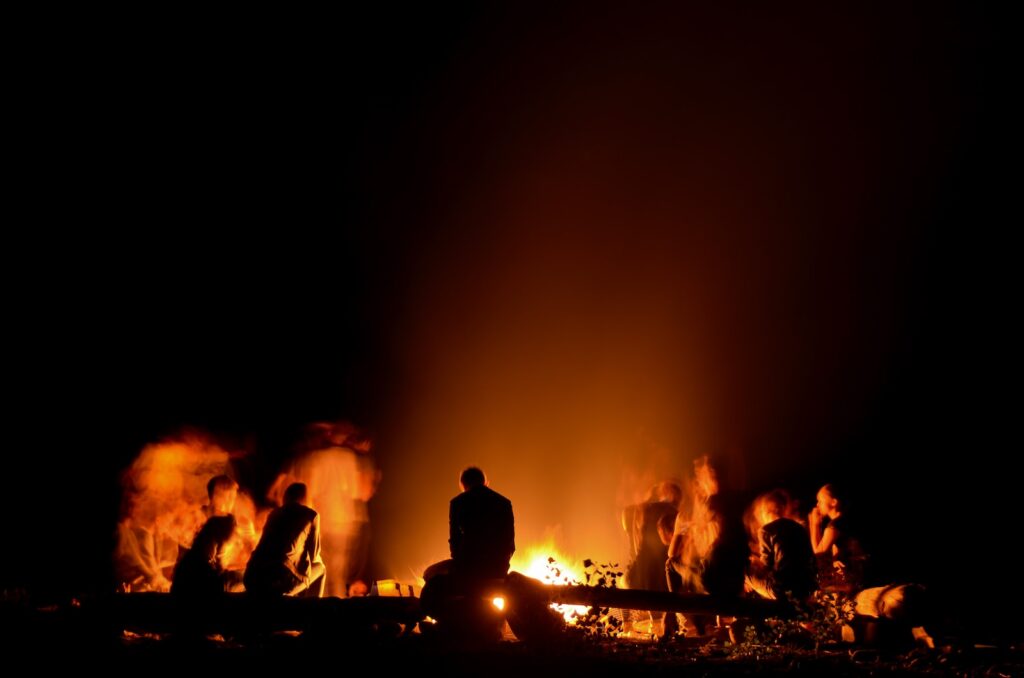
Werewolf: A Thrilling Campfire Game
Werewolf is a captivating game of deception, deduction, and strategy that can be enjoyed around the campfire. It’s a game that engages all players and can lead to unexpected twists and turns. Here’s how to play:
Objective
In the imaginary village setting, there are two main groups: the innocent villagers and the deceptive werewolves. The villagers’ goal is to identify and eliminate all the werewolves, while the werewolves aim to outnumber the villagers.
Setup
- Choose a Moderator: First, you will need a neutral moderator to oversee the game. The moderator will be responsible for guiding the gameplay, announcing day and night phases, and revealing eliminated players.
- Assign Roles: Depending on the number of players, you’ll assign roles for villagers, werewolves, and possibly some special characters like the Seer or Doctor. You can write the roles on pieces of paper and have players draw them or use a Werewolf game app.
- Roles Explained:
- Villagers: Ordinary players who try to figure out who the werewolves are.
- Werewolves: Their goal is to deceive the villagers and eliminate them without being caught.
- Seer (Optional): Has the ability to “see” if a player is a werewolf or a villager during the night phase.
- Doctor (Optional): Can choose to “save” a player during the night phase, preventing their elimination.
Gameplay
The game alternates between night and day phases.
- Night Phase:
- Everyone closes their eyes.
- The moderator asks the werewolves to open their eyes and silently choose a villager to eliminate.
- Optional roles like the Seer and Doctor then take their actions.
- The werewolves close their eyes again, and everyone wakes up.
- Day Phase:
- The moderator announces who was eliminated during the night.
- The remaining players (including the werewolves) discuss and vote on whom they suspect is a werewolf. The player with the most votes is eliminated.
- The next night phase begins, and the cycle continues.
Winning the Game
The game continues until either:
- All the werewolves have been eliminated (villagers win), or
- The werewolves equal or outnumber the remaining villagers (werewolves win).
A campfire is a social hub, a place of gathering, storytelling, and bonding. With the right activities, safety measures, and consideration for the environment, it becomes a memorable part of the camping adventure.
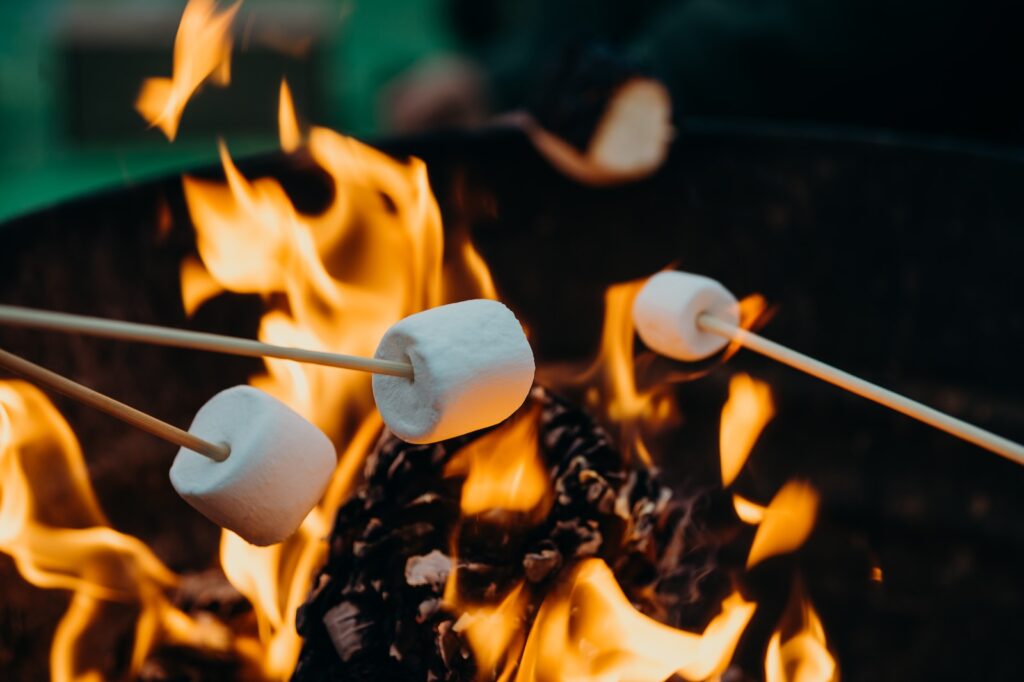
Conclusion: Ignite the Fun of Camping with the Perfect Fire
Camping fires are synonymous with the outdoor adventure experience. They provide warmth, ambiance, a way to cook food, and a focal point for socializing. But behind every great campfire lies thoughtful planning and consideration.
From selecting the best hardwoods like oak, maple, or birch to understanding the importance of dry, well-seasoned logs, your choice in firewood can make all the difference in efficiency, safety, and enjoyment. Pairing the right wood with a properly chosen and safely constructed fire pit ensures that the fire serves your needs without harming the environment.
Additionally, local regulations should never be overlooked. Compliance with local guidelines ensures the sustainability of the natural surroundings and helps prevent the spread of invasive species. Safety, too, must always be at the forefront, with adherence to fire regulations, preparedness for emergencies, and a commitment to fully extinguishing the fire before leaving the campsite.
But a campfire is more than just logs and flames. It’s a catalyst for connection and enjoyment. Games like “Two Truths and a Lie” transform the glow of the fire into a spark for conversation, laughter, and lasting memories.
So as you pack your bags for your next camping adventure, remember that the best camping fires start not just with the logs you choose, but with the care, respect, and joy you bring to the experience. Happy camping!
FAQ: Camping Fire
Q1: What types of wood are best for a camping fire? A1: Hardwoods such as oak, maple, or birch are preferred for camping fires, as they burn slowly and produce long-lasting heat. Softwoods like pine or aromatic woods like cedar can also be used in combination with hardwoods.
Q2: How can I ensure my camping fire is safe? A2: Choose a suitable location away from flammable objects, use a fire ring or rocks to contain the fire, keep a bucket of water nearby, and follow local fire regulations. Always extinguish the fire completely before leaving the campsite.
Q3: Can I collect firewood from the woods for my camping fire? A3: This depends on local regulations. Some areas may restrict the collection of firewood due to environmental concerns or the spread of invasive species. It’s often best to purchase firewood locally or use designated firewood provided at the campsite.
Q4: What are some fun games to play around a camping fire? A4: Popular camping fire games include “Two Truths and a Lie,” storytelling, singing, or simply sharing experiences and memories. Always be mindful of safety while enjoying games near the fire.
Q5: Are there portable fire pits suitable for camping? A5: Yes, many portable and lightweight fire pits are designed specifically for camping. Look for ones that are easy to transport, durable, and comply with local regulations or campsite rules.
Q6: How do I build a camping fire? A6: Start with a clear area and a ring of rocks. Place kindling in the center and stack firewood in a teepee or log cabin shape. Light the kindling, gradually add larger logs, and monitor the fire, ensuring it’s completely extinguished when done.
Q7: Can I cook over a camping fire? A7: Yes, cooking over a camping fire is common. Use hardwoods for a consistent heat source, and ensure the wood is dry and well-seasoned to minimize smoke. Cooking utensils designed for campfire use can enhance the experience.
Q8: What should I do if it rains during my camping trip? Will the firewood get wet? A8: If rain is expected, keep firewood covered or stored in a dry place. Wet wood can be challenging to light, so planning ahead and protecting your firewood will ensure an enjoyable campfire experience.

